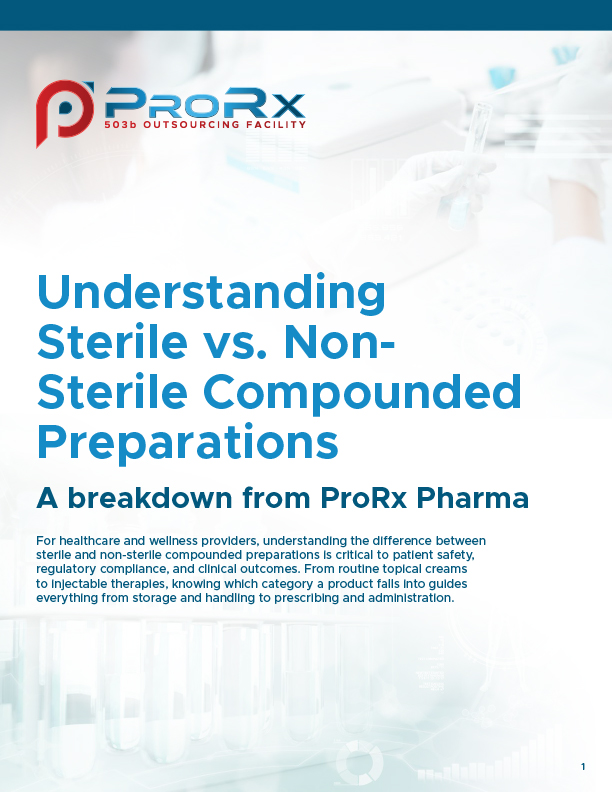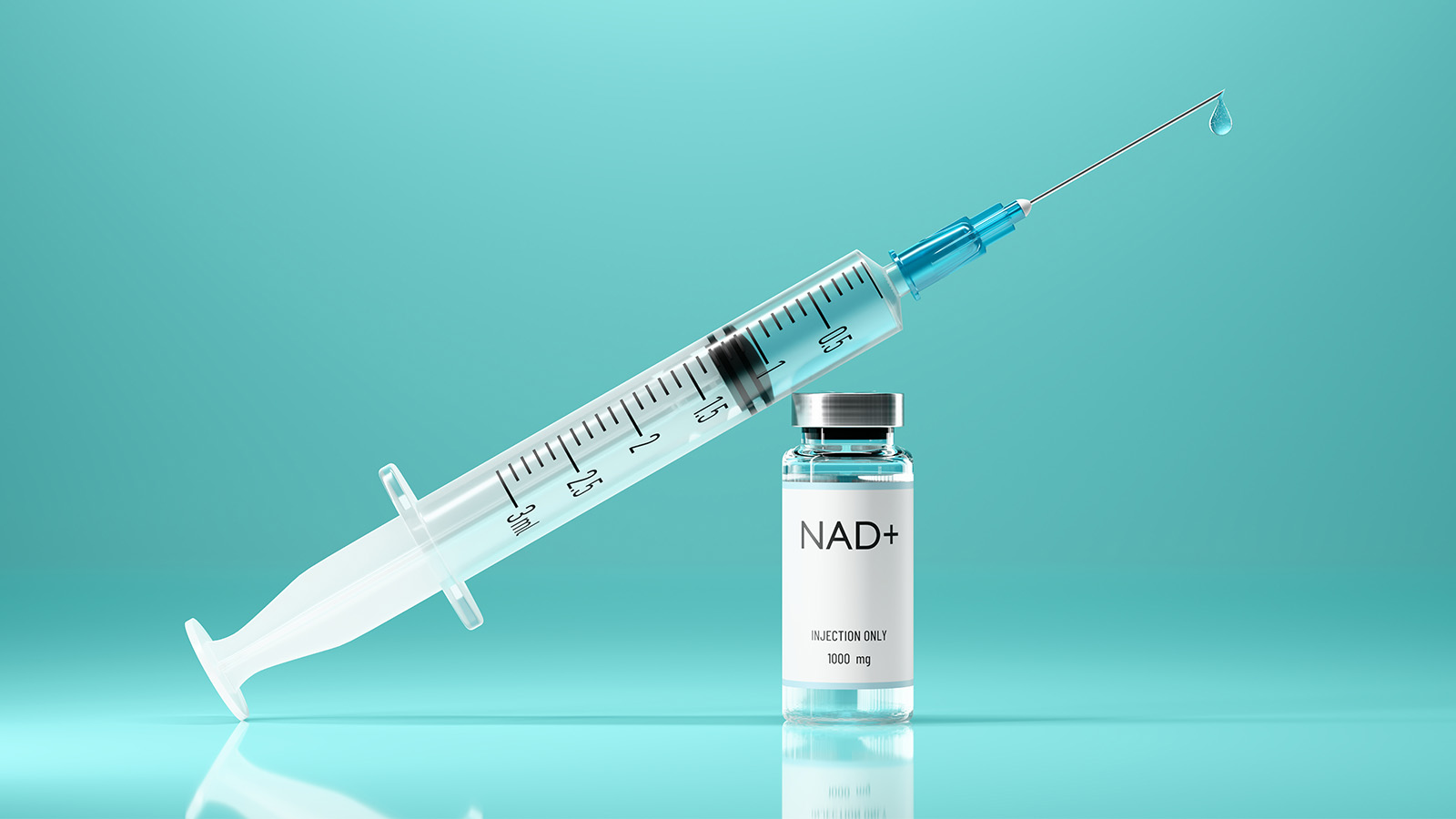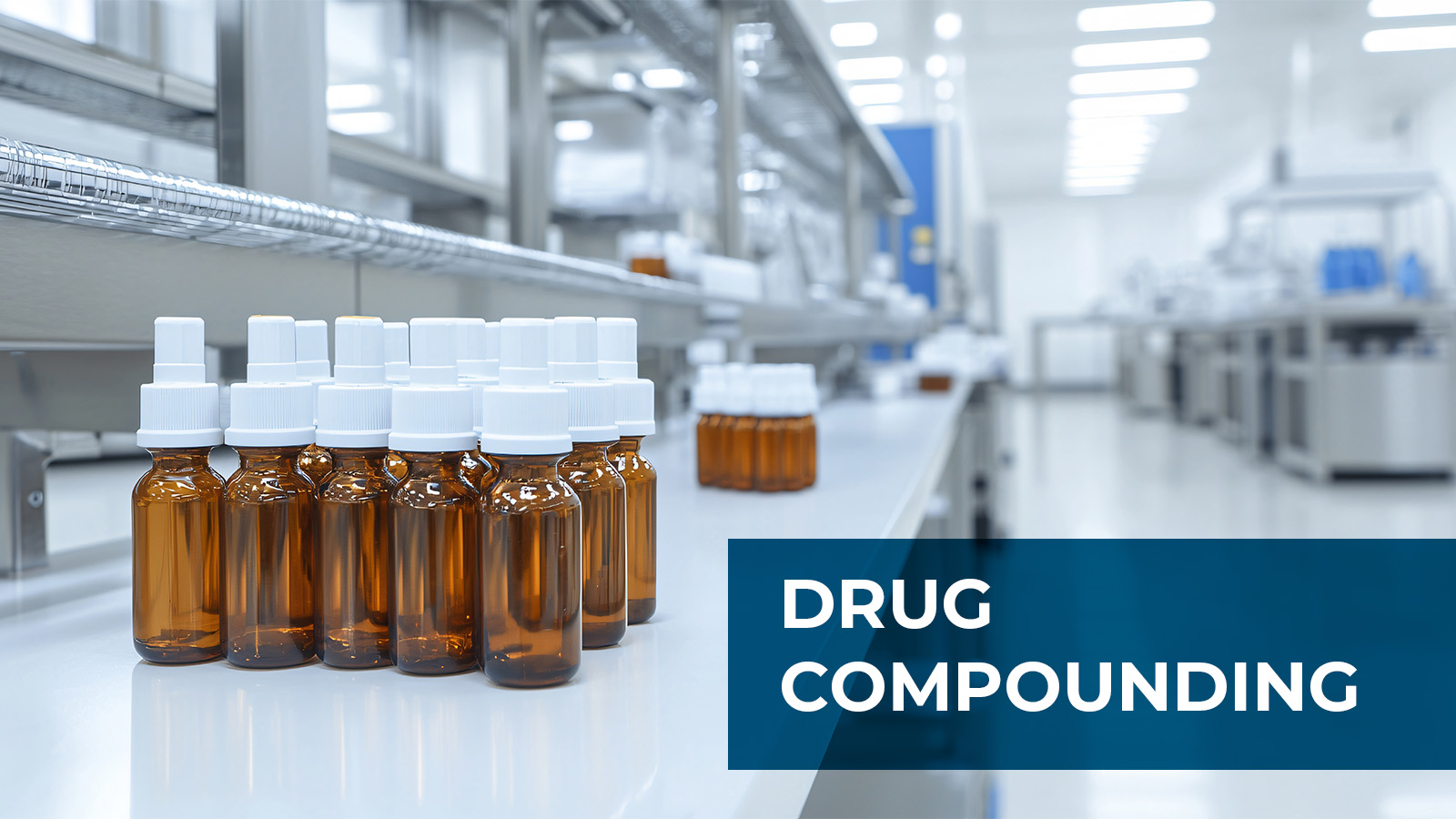For healthcare and wellness providers, understanding the difference between sterile and non-sterile compounded preparations is critical to patient safety, regulatory compliance, and clinical outcomes. From routine topical creams to injectable therapies, knowing which category a product falls into guides everything from storage and handling to prescribing and administration.
What Are Sterile Preparations?
Sterile preparations are compounded medications that are free from all living microorganisms. These products are typically administered via parenteral routes—meaning the input of drugs or medications into the human body in a way not involving the intestines or the digestive tract. Parenteral drugs are typically injected directly into the human body and have a systemic, wide effect on the body. Sterile preparations include:
- Intravenous (IV) injections
- Ophthalmic solutions
- Inhalation aerosols
- Intrathecal (situated within the thecal sac: covering the spinal cord) or epidural medications (situated on or outside the dura mater: the tough, fibrous membrane forming the outermost covering of the spinal cord).
Key considerations for sterile preparations:
- Aseptic Technique: Compounding must occur in a controlled environment (cleanrooms, laminar airflow hoods, or isolators).
- Regulatory Standards: Sterile compounding falls under USP <797> and FDA Current Good Manufacturing Practices (cGMP) (21 CFR Parts 210/211) regulations for 503B outsourcing facilities.
- USP <797> and FDA cGMP regulations set rigorous standards for 503B outsourcing facilities, covering everything from personnel training to process validation and documentation. Dedicated quality oversight ensures that every step—from ingredients to final product—is consistently monitored for safety. Because sterile products bypass the body’s natural defenses, strict compliance is essential to protect patients from potentially serious or life-threatening infections.
- Quality Oversight: A dedicated quality unit, validated processes, and documented Standard Operating Procedures (SOPs) are required to ensure sterility and patient safety.
- Higher Risk: Sterile products carry a greater risk if contamination occurs, making compliance, training, and monitoring essential.
What Are Non-Sterile Preparations?
Non-sterile preparations are compounded medications that do not require complete elimination of microorganisms. They are generally intended for oral, topical, or rectal administration.
Non-sterile preparations include:
- Oral capsules
- Topical creams
- Gels
- Lozenges
- Suspensions, or liquid medications
Key considerations for non-sterile preparations:
- Lower Contamination Risk: Nonsterile products are less susceptible to life-threatening infections.
- Regulatory Standards: Compounding must follow USP <795>, which outlines good practices for non-sterile compounding, including ingredient quality, equipment, and storage.
- Quality Oversight: While less stringent than sterile compounding, non-sterile preparations still require clear SOPs, proper documentation, and quality control checks.
Key Differences at a Glance
| Feature | Sterile Preparations | Nonsterile Preparations |
| Microbial requirement | Must be completely sterile | May contain non-pathogenic microbes within limits |
| Routes of administration | Parenteral (injections, IV, eye drops) | Oral, topical, rectal, vaginal |
| Standards & regulations | USP <797>, USP <71>, FDA cGMP | USP <795> |
| Risk level | High (infection risk) | Moderate to low |
| Quality control focus | Aseptic technique, validation, environmental monitoring | Accurate measurement, ingredient verification, stability |
Why Healthcare Providers Should Care
Choosing the correct preparation type isn’t just regulatory—it’s about patient safety and clinical effectiveness:
- Compliance: Ensures that your practice meets federal, state, and United States Pharmacopeia (USP) regulations.
- Risk Management: Sterile products require special handling to avoid contamination; using non-sterile products inappropriately could be unsafe.
- Patient Outcomes: Accurate administration and formulation type affect efficacy, tolerability, and safety.
- Procurement: Knowing the difference helps providers vet 503B or 503A suppliers correctly, confirm proper licensing, and request quality documentation.
Key Takeaways
Understanding the difference between sterile and non-sterile compounded preparations is essential for healthcare providers to ensure patient safety, regulatory compliance, and clinical effectiveness. Sterile preparations require strict aseptic techniques, quality oversight, and adherence to USP <797> and FDA cGMP standards, while non-sterile preparations follow USP <795> guidelines with a lower risk of microbial contamination.
By knowing which type of preparation is appropriate for a given route of administration, and by sourcing from licensed, quality-focused compounding facilities, providers can deliver safe, effective therapies while minimizing risk and ensuring operational compliance.











